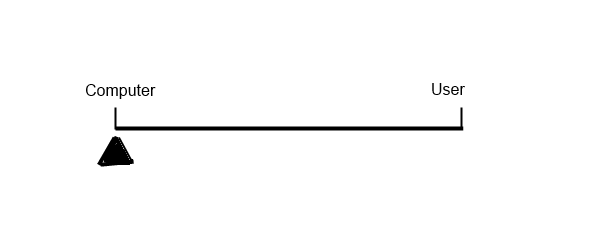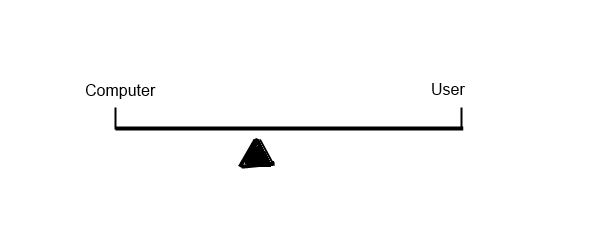METRO "tiles": the new metaphor revolution
Microsoft announces the new release of its operative system, Windows 9, just after two years from the release of the Metro interface.
These two years run quickly, without any other news about the graphical interface.
It seams strange to me that the Metro revolution has not be noted in its extraordinary innovation. Let's follow the PC Graphical User Interface (GUI) evolution: try to imagine measuring the "distance" between the domain of the machine and the domain of the user of each of them and let's compare it. For each interface I'll talk about the metaphor that is underneath each of them. The use of metaphor allows the user to understand easily a new concept letting her or him to think about concepts that she or he already knows.
First metaphor: the terminal
The first interface I'd like to refer to is the "terminal". In this case the human-machine interface was entirely unbalanced on the machine side. It was up to the user to adapt towards the machine domain: she or he could only interact with the machine using the available set of commands.

Only a few computer specialist users could manage to interact with that type of interface.
Second metaphor: the desktop
The first revolution in the world of computer interfaces was the introduction of the windows graphical interface. The metaphor underneath this interface is the desktop. It is the first metaphor used to move the balance between the user and the machine towards the user:

The computer shows itself with an image well known by its users: the desktop. Dealing with the computer is a matter of selecting a document with the left mouse button click that represents the human finger on the virtual desktop. Making an action is a double-click on it.
The list of actions available on the selected document is always shown from the menu that appears with the right mouse button click.
It was a genius idea that allowed a wider pool of people to be comfortable with the interface. Other improvements were made to simplify the approach of the user to the computer and to progressively even hiding it. But the metaphor remained the "desktop" for at least the last twenty years.
Just until Metro appears. The arrive of the tiles, tidy and essential, like buttons, further laid on a virtually infinite strip, have finally changed the metaphor.
The physical limited space of the desktop has been broken: the new interface represents a plane in the infinite open space. It is a simple idea but it makes me feel dizzy. The target of the user actions is not more the "document" with its archive (the file system) but is the feature.
Anyone can use the computer, not only who is acquainted with the idea of the work made at a desktop. Anyone who wants to use something available on the system or reachable with it (browsing the Internet resources for example) can easily do it.
The tiles are suited to be the interface for any device, not only a computer or a tablet or a phone. It is the interface for any equipment, it is a commands console already included in the user domain:

And the next one?
All those tiles laid on the plane make me foreseen the next evolution of the interface, without making a new metaphor, but moving further after the user.
The tiles could become 3D representation of things, placed not more on a plane but in the space. All the objects that we use are changing their interface: they will be much more connected and available on Internet. This evolution is called "Internet of Things".
Merging the metaphor of the open space together with the objects interface evolution, the balance will move further:
